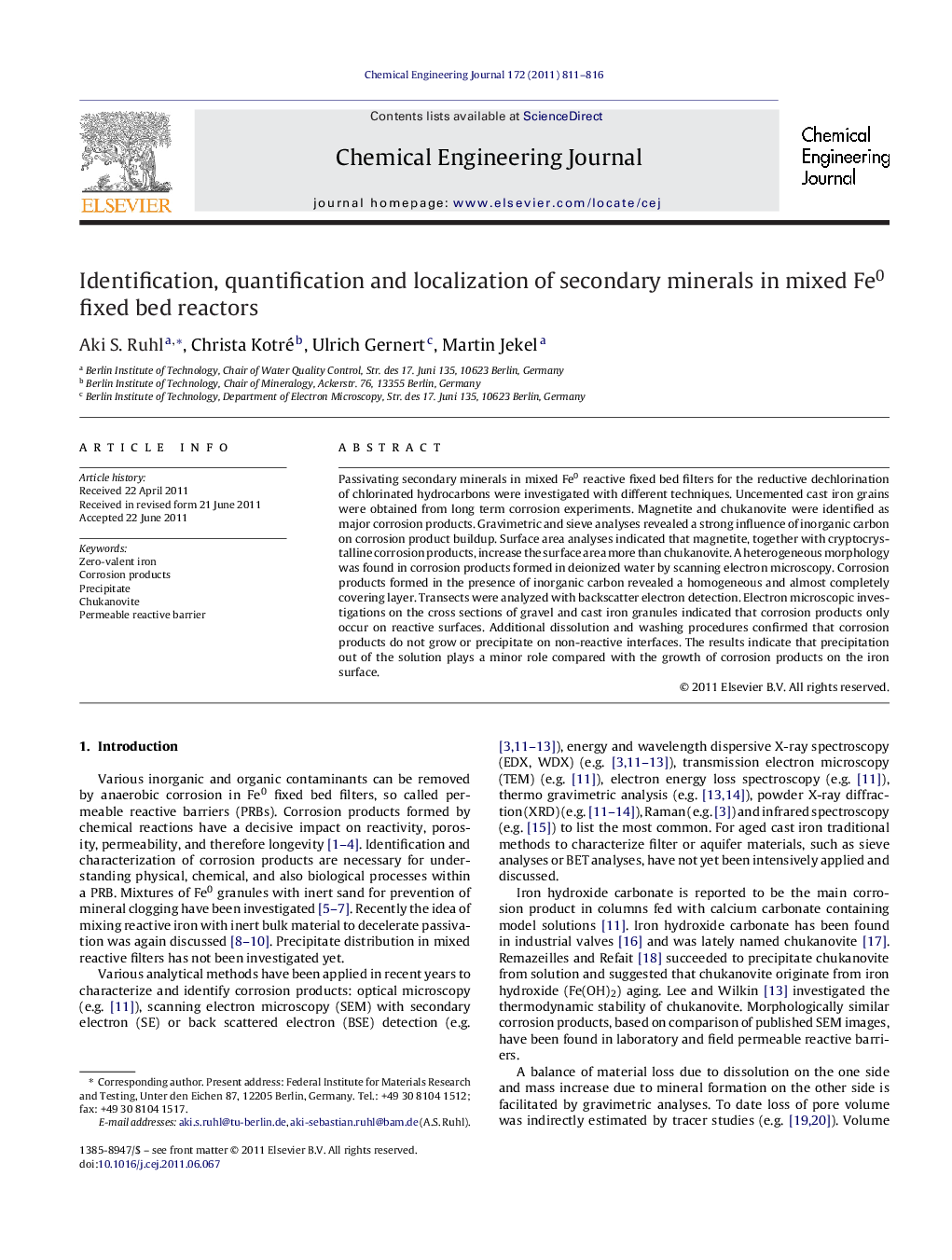| Article ID | Journal | Published Year | Pages | File Type |
|---|---|---|---|---|
| 150781 | Chemical Engineering Journal | 2011 | 6 Pages |
Passivating secondary minerals in mixed Fe0 reactive fixed bed filters for the reductive dechlorination of chlorinated hydrocarbons were investigated with different techniques. Uncemented cast iron grains were obtained from long term corrosion experiments. Magnetite and chukanovite were identified as major corrosion products. Gravimetric and sieve analyses revealed a strong influence of inorganic carbon on corrosion product buildup. Surface area analyses indicated that magnetite, together with cryptocrystalline corrosion products, increase the surface area more than chukanovite. A heterogeneous morphology was found in corrosion products formed in deionized water by scanning electron microscopy. Corrosion products formed in the presence of inorganic carbon revealed a homogeneous and almost completely covering layer. Transects were analyzed with backscatter electron detection. Electron microscopic investigations on the cross sections of gravel and cast iron granules indicated that corrosion products only occur on reactive surfaces. Additional dissolution and washing procedures confirmed that corrosion products do not grow or precipitate on non-reactive interfaces. The results indicate that precipitation out of the solution plays a minor role compared with the growth of corrosion products on the iron surface.
• A Fe0 mass loss in deionized water and a mass gain in the presence of inorganic carbon was found. • Chukanovite is the main corrosion product in the presence of inorganic carbon. • Magnetite and cryptocrystalline provide a comparably large surface area. • A layer of 20 μm of chukanovite passivates cast iron. • No precipitate layer grows on inert gravel surfaces.
